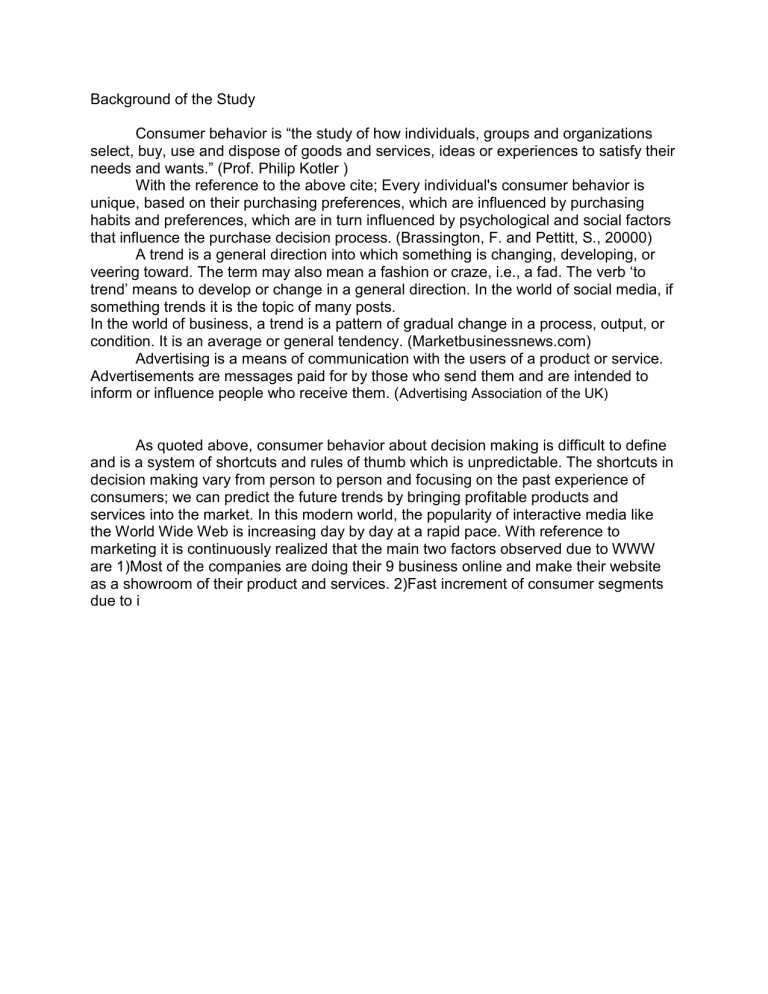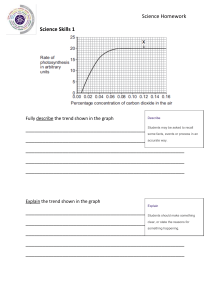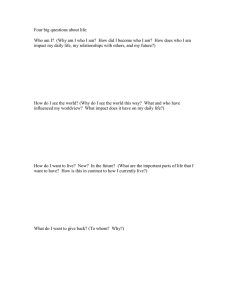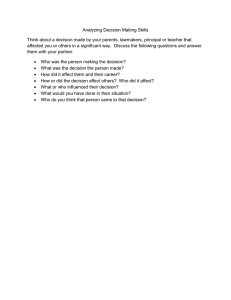Consumer Behavior & Online Trends Research Paper
advertisement

Background of the Study Consumer behavior is “the study of how individuals, groups and organizations select, buy, use and dispose of goods and services, ideas or experiences to satisfy their needs and wants.” (Prof. Philip Kotler ) With the reference to the above cite; Every individual's consumer behavior is unique, based on their purchasing preferences, which are influenced by purchasing habits and preferences, which are in turn influenced by psychological and social factors that influence the purchase decision process. (Brassington, F. and Pettitt, S., 20000) A trend is a general direction into which something is changing, developing, or veering toward. The term may also mean a fashion or craze, i.e., a fad. The verb ‘to trend’ means to develop or change in a general direction. In the world of social media, if something trends it is the topic of many posts. In the world of business, a trend is a pattern of gradual change in a process, output, or condition. It is an average or general tendency. (Marketbusinessnews.com) Advertising is a means of communication with the users of a product or service. Advertisements are messages paid for by those who send them and are intended to inform or influence people who receive them. (Advertising Association of the UK) As quoted above, consumer behavior about decision making is difficult to define and is a system of shortcuts and rules of thumb which is unpredictable. The shortcuts in decision making vary from person to person and focusing on the past experience of consumers; we can predict the future trends by bringing profitable products and services into the market. In this modern world, the popularity of interactive media like the World Wide Web is increasing day by day at a rapid pace. With reference to marketing it is continuously realized that the main two factors observed due to WWW are 1)Most of the companies are doing their 9 business online and make their website as a showroom of their product and services. 2)Fast increment of consumer segments due to i Theoretical Framework Expectation confirmation theory, innovative diffusion theory, and theory of reasoned action are only a few of the theories on online consumer behavior. (Christy M. K. Cheung, 2003, p. 198) When it comes to offline and online elements, consumer behavior differs. Online consumers, according to SubhasishDasgupta, are classified based on their personalities. Have two distinct characteristics: a) an expression of offline consumer behavior; and b) a one-of-a-kind product. mode of behavior On the internet, virtual communities play an essential role as well. Consumer behavior is important. "Venuses for virtual communities" is another name for virtual communities. consumables" (Dasgupta, 2006, p. 340). There are numerous aspects that influence online customer behavior. In a nutshell, his behavior while shopping is complicated. social, cultural, educational, racial, personality, environment, and resource availability are all factors. The Expectation-Confirmation Theory (ECT) (Figure 2) asserts that consumers’ intention to repurchase a product or service is significantly influenced by their prior experience with that product or service (Anderson and Sullican, 1993; Oliver, 1980). Satisfactory experience is a key enabler for building and retaining long-term consumer relationships.



